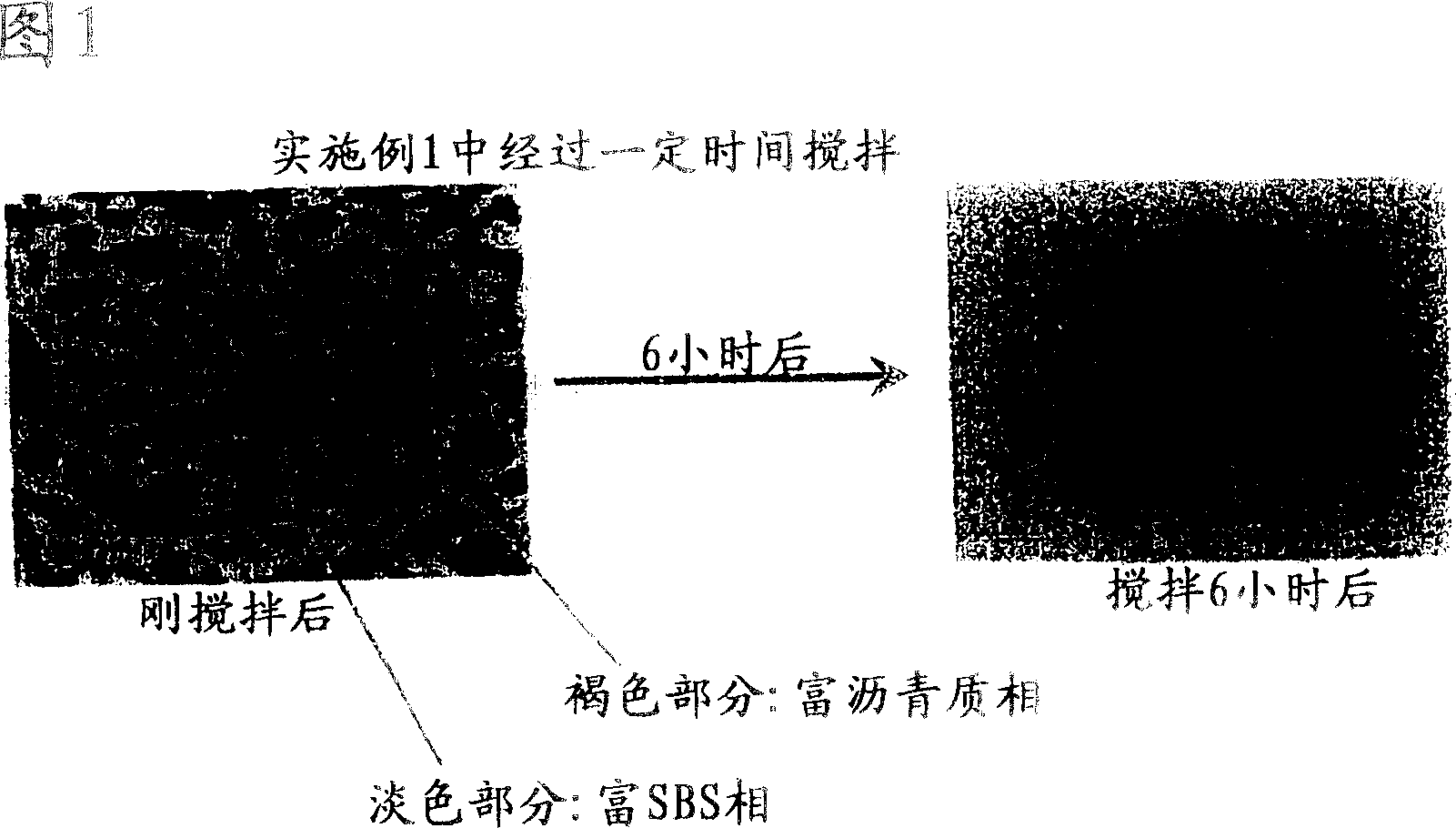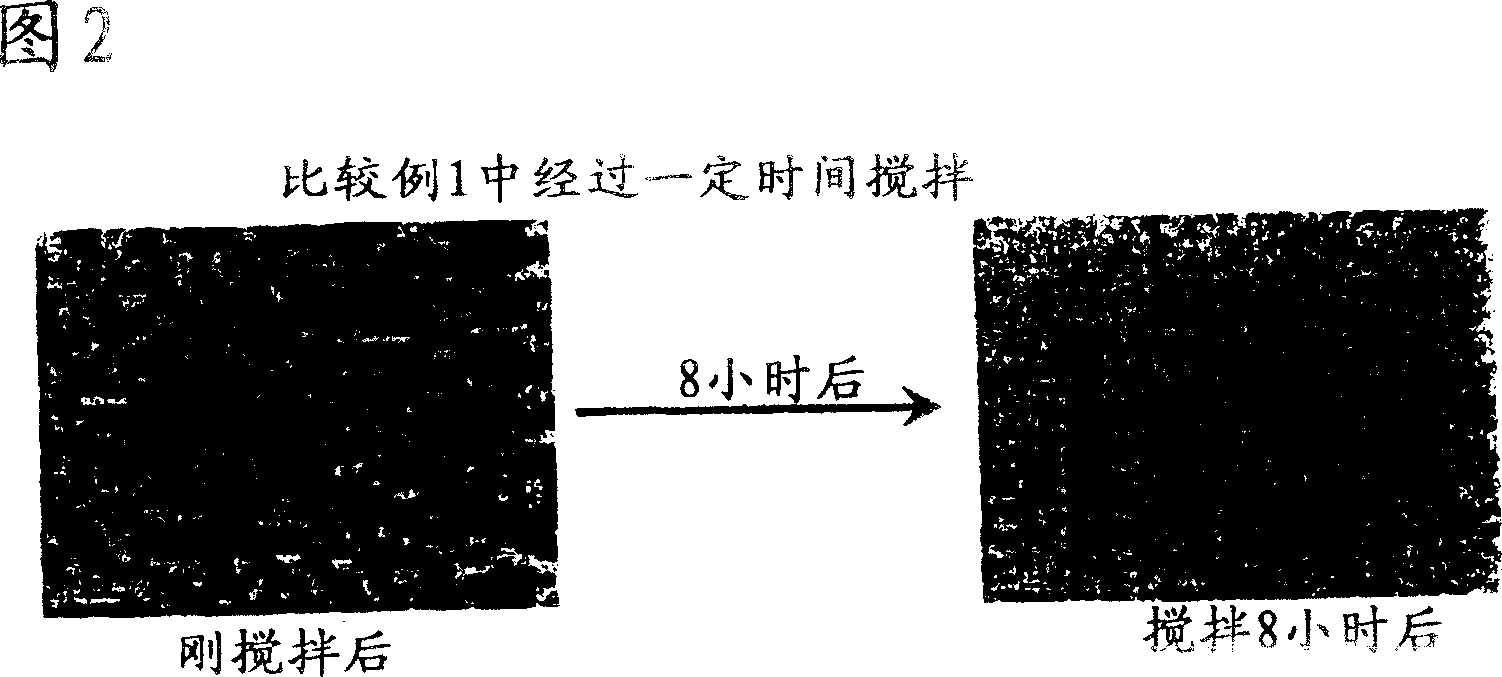Block copolymer composition for asphalt modification, process for producing the same, and asphalt composition
A technology of block copolymer and asphalt modification, which is applied in the direction of building structure, building components, building insulation materials, etc., can solve the rotary shear load resistance (the twisting resistance cannot be said to have been fully improved, no asphalt dissolution has been found Solve problems such as resistance to torsion, road damage, etc., and achieve the effects of excellent torsion resistance, excellent performance balance, and excellent elongation
- Summary
- Abstract
- Description
- Claims
- Application Information
AI Technical Summary
Problems solved by technology
Method used
Image
Examples
Embodiment 1
[0138] Preparation of Block Copolymer Compositions
[0139] (1) (i) Polymerization of block copolymers
[0140] For a stainless steel polymerization vessel with an internal volume of 100 liters equipped with a jacket and a stirrer, it was fully replaced with nitrogen, and then 50 kg of cyclohexane, 0.5 g of ethylene glycol diethyl ether, and 1.6 kg of styrene were added. Warm water was passed inside to make the content 40°C.
[0141] Then, 5.9 g of sec-butyllithium was added to initiate polymerization. After the polymerization of styrene was completed, 4.8 kg of 1,3-butadiene was slowly added while adjusting the temperature so that the temperature of the contents was 80°C. After the B block polymerization was completed, 1.6 kg of styrene was added and reacted for 30 minutes. After the reaction, 1 ml of methanol was added, and after stirring for 10 minutes, the liquid was transferred to a mixing container.
[0142] (2)(ii) Polymerization of block (co)polymers
[0143] As i...
Embodiment 2~6
[0151] Except changing the addition amount of styrene, 1,3-butadiene, sec-butyllithium, and ethylene glycol diethyl ether, in the same manner as in Example 1, the embeddings for asphalt modification shown in Table 1 were obtained. Segment copolymer composition, preparation of asphalt composition, and evaluation of its performance.
[0152] Table 1 lists the evaluation results for various characteristics.
Embodiment 7
[0154] (i) Block copolymers were prepared in the following manner. That is, in the same stainless steel polymerization vessel as in Example 1, 50 kg of cyclohexane, 2.0 g of ethylene glycol diethyl ether, and 0.96 kg of styrene were charged, and warm water was passed through the jacket to bring the contents to 40°C.
[0155] Then, 5.1 g of sec-butyllithium was added to initiate polymerization. After the polymerization of styrene was completed, 5.44 kg of 1,3-butadiene and 0.64 kg of styrene were slowly added while adjusting the temperature so that the temperature of the contents was 80°C. After the B block polymerization was completed, 0.96 kg of styrene was added and reacted for 30 minutes. After the reaction, 5 ml of methanol was added, and after stirring for 10 minutes, the liquid was transferred to a mixing container.
[0156] For (ii) block (co)polymer, except changing the addition amount of styrene, 1,3-butadiene, sec-butyllithium, ethylene glycol diethyl ether, in the...
PUM
 Login to View More
Login to View More Abstract
Description
Claims
Application Information
 Login to View More
Login to View More - R&D
- Intellectual Property
- Life Sciences
- Materials
- Tech Scout
- Unparalleled Data Quality
- Higher Quality Content
- 60% Fewer Hallucinations
Browse by: Latest US Patents, China's latest patents, Technical Efficacy Thesaurus, Application Domain, Technology Topic, Popular Technical Reports.
© 2025 PatSnap. All rights reserved.Legal|Privacy policy|Modern Slavery Act Transparency Statement|Sitemap|About US| Contact US: help@patsnap.com


